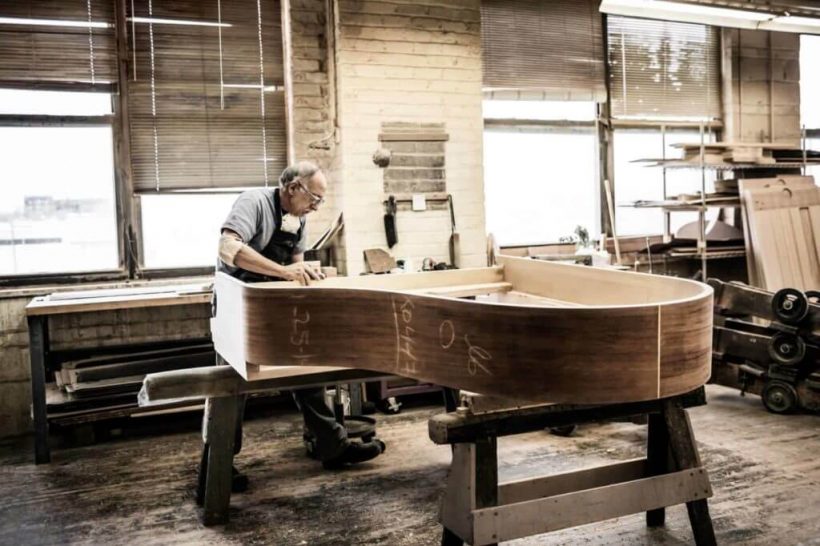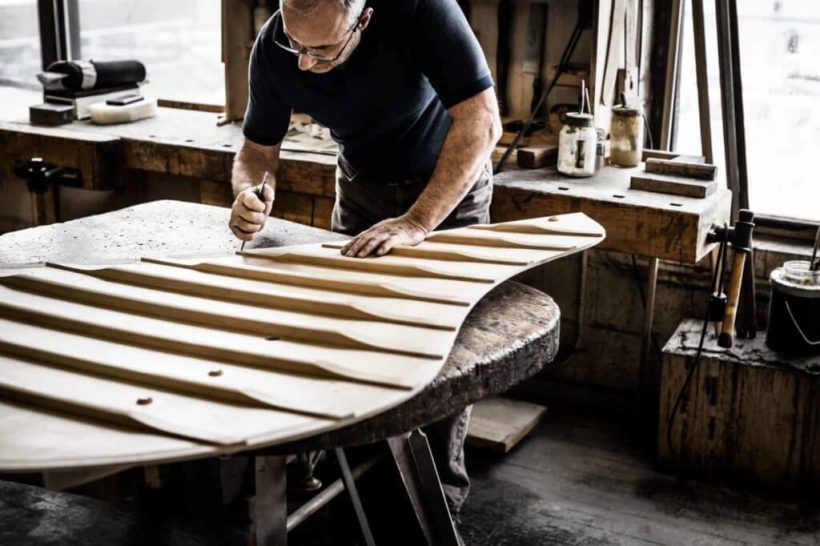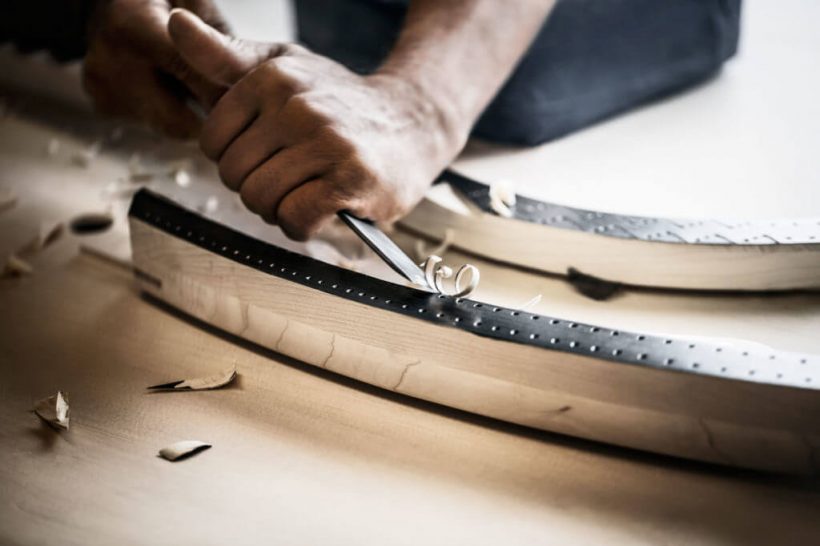

Created like the soundboard of violins to give a free and even response throughout the entire scale, the soundboard is 9mm thick in the center and tapers to 6mm as it apporches the rim and outer case before being double crowned. The design permits complete freedom of movement while displacing a greater amount of air, creating a richer and more lasting tonal response. Close-grained, quarter-sawn sitka spruce – which has unusual stability and vibrance under stress and vibration – is used exclusively for the soundboard.

The Hexagrip patented design features 7 laminations of quartered hardrock maple stock. Grain is symmetrically distributed at successive angles of 45 degrees and 90 degrees, employing uniform grain direction around the circumference of the tuning pin to provide the ultimate pin grippage. The exclusive design provides the tuning pin with smoother movement under torque, a more uniform retaining action, and a piano that holds its tuning longer.
